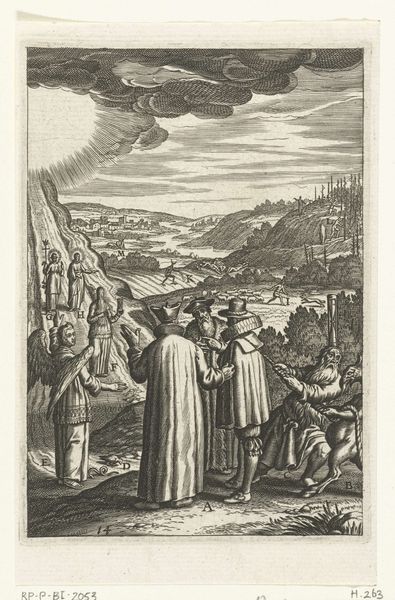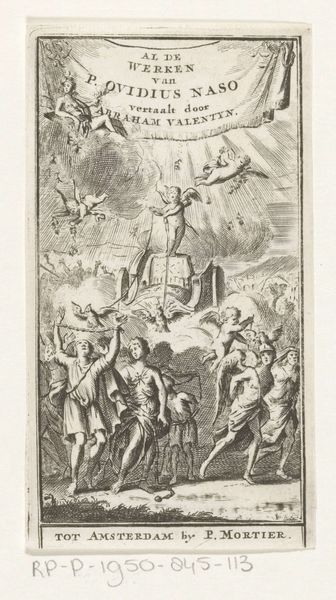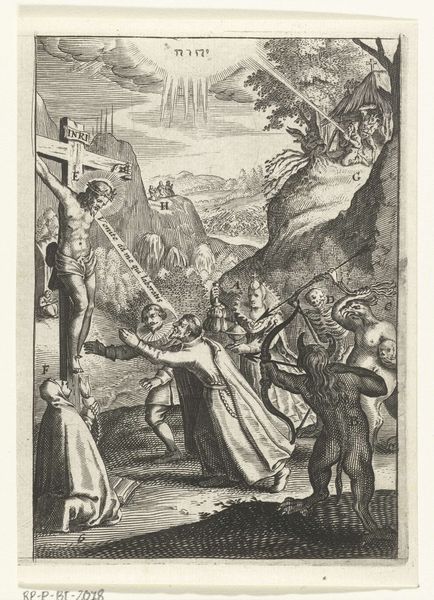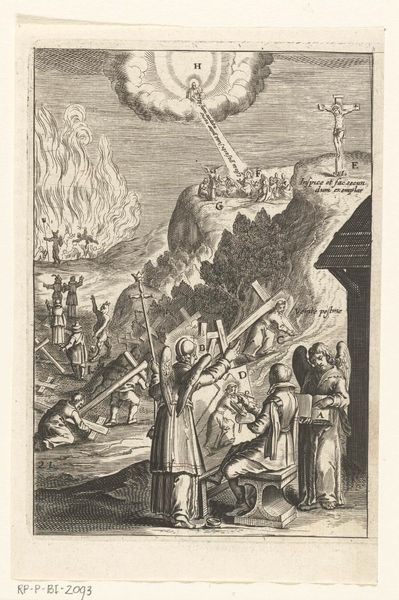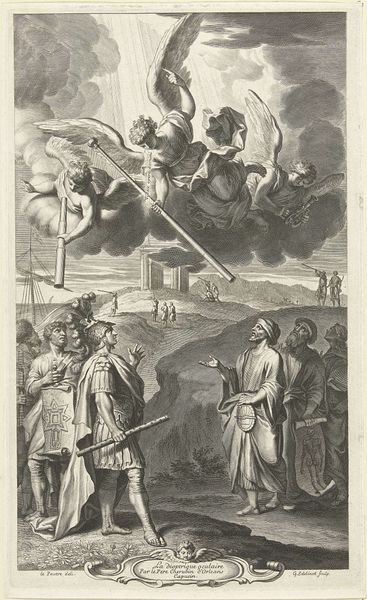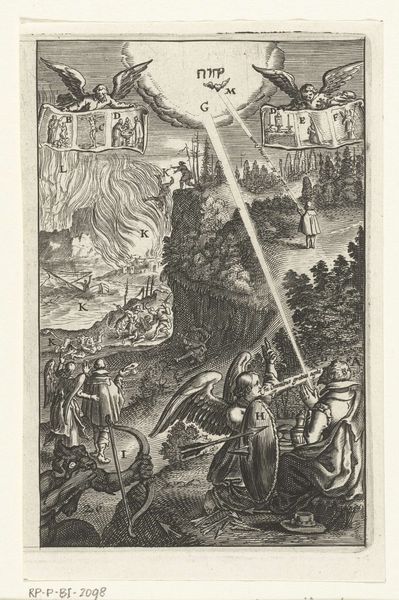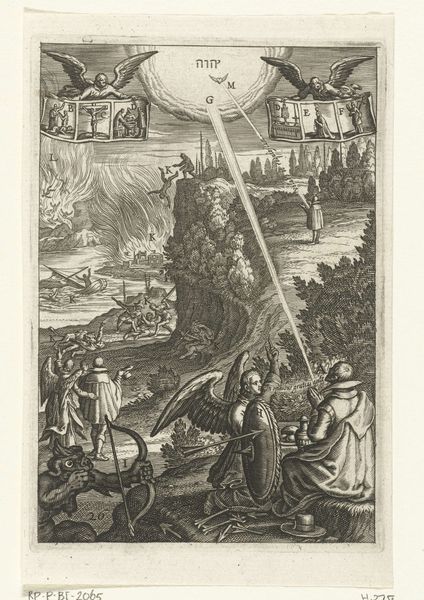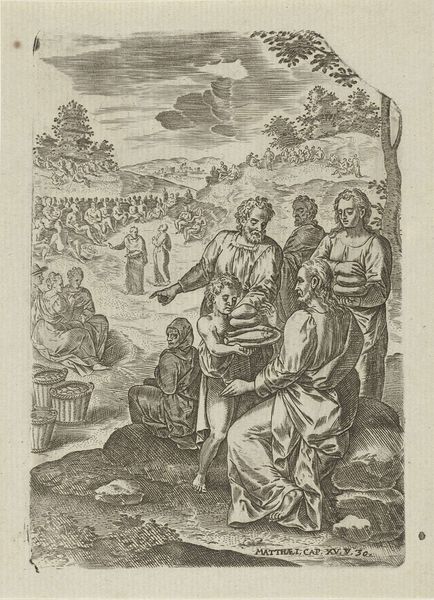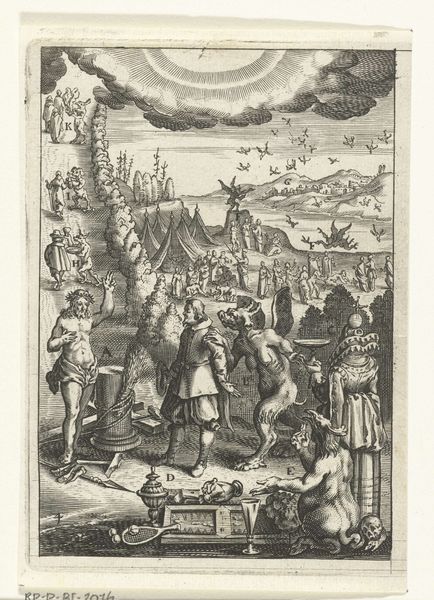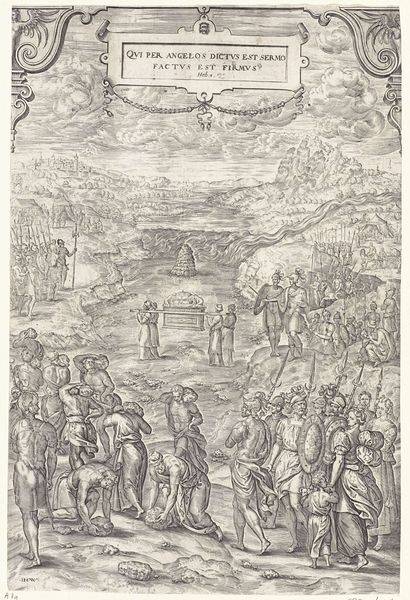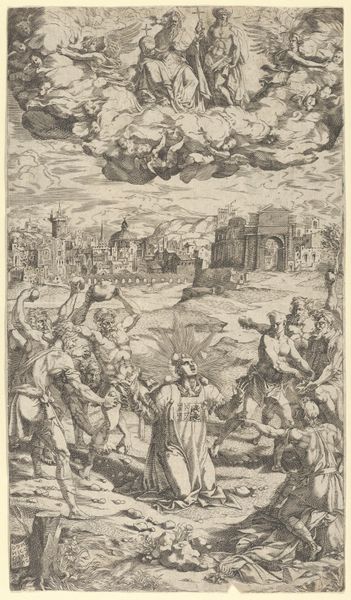
Embleem met man die zijn vrienden aanraadt te leven in deugd 1620 - 1649
0:00
0:00
print, engraving
#
allegory
#
baroque
# print
#
old engraving style
#
landscape
#
figuration
#
line
#
history-painting
#
engraving
Dimensions: height 146 mm, width 100 mm
Copyright: Rijks Museum: Open Domain
This anonymous emblem, printed with etching, presents a vivid allegory of virtue. On the left, we see figures ensnared by vice, symbolized by the leering satyr. But look towards the radiant light on the right. Here, virtue beckons in the form of an angel. This contrast embodies a timeless struggle. Remember, the figure of the angel isn’t unique to Christian art. We see winged figures in ancient Mesopotamian reliefs, and the Greeks had their Nike, goddess of victory, often depicted with wings. It is interesting to see how in Renaissance art, angels often appear as androgynous figures, reflecting a more nuanced view of spiritual perfection. The light emanating from above serves as more than a divine presence; it evokes Plato’s ‘Allegory of the Cave’ where enlightenment comes from escaping the darkness. The pursuit of virtue then, isn’t just a moral choice, but an ascent toward knowledge and truth. Each symbol creates a powerful emotional resonance, urging us towards introspection. It is a cycle of temptation, choice, and striving— echoing throughout art history.
Comments
No comments
Be the first to comment and join the conversation on the ultimate creative platform.
